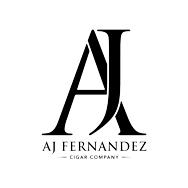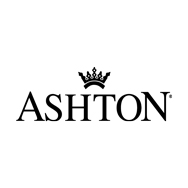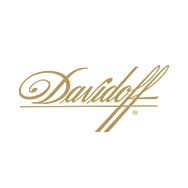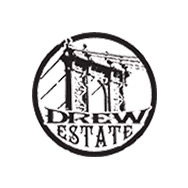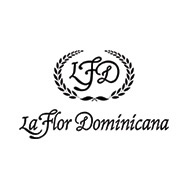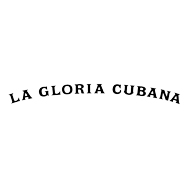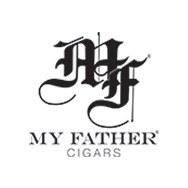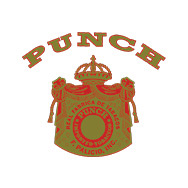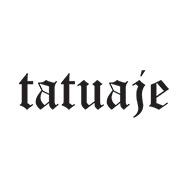
Padrón Cigars
Padrón cigars enjoy a truly legendary status among cigar connoisseurs around the world with scores of 90+ rated offerings. Padrón’s reputation dates back to 1964 and today the brand is recognized for an elegant portfolio of premium, handcrafted, aged Nicaraguan blends. Rich flavors and perfect construction continue to keep fans of Padrón cigars readily engaged with a classic profile that speaks for itself.
CIGARS

Fuente y Padrón Legends
Price Per Cigar:Only $178.003 options availableStrength: Medium-Full3 Reviewsread more
Padrón
Price Per Cigar:$5.75 - $12.6054 options availableStrength: MediumCountry: NicaraguaWrapper: Nicaraguan107 Reviewsread more
Padrón 1926 Series
Price Per Cigar:$15.80 - $26.4042 options availableStrength: FullCountry: NicaraguaWrapper: Nicaraguan31 Reviewsread more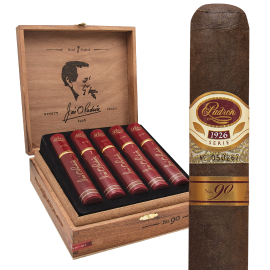
Padrón 1926 Series #90
Price Per Cigar:Only $24.806 options availableStrength: FullCountry: NicaraguaWrapper: Nicaraguan16 Reviewsread more
Padrón 1964 Anniversary
Price Per Cigar:$13.60 - $38.2581 options availableStrength: Medium-FullCountry: NicaraguaWrapper: Nicaraguan93 Reviewsread more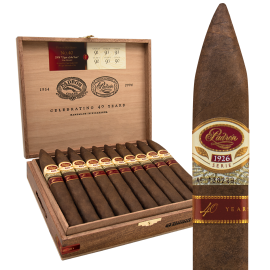
Padrón 40th Anniversary
Price Per Cigar:Only $31.406 options availableStrength: FullCountry: NicaraguaWrapper: Nicaraguan9 Reviewsread more
Padrón 50th Anniversary
Price Per Cigar:Only $47.756 options availableStrength: FullCountry: NicaraguaWrapper: Nicaraguan23 Reviewsread more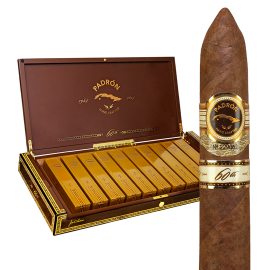
Padrón 60th Anniversary
Price Per Cigar:Only $75.004 options availableStrength: FullCountry: NicaraguaWrapper: Nicaraguan3 Reviewsread more
Padrón 80 Years
Price Per Cigar:Only $36.704 options availableStrength: FullCountry: NicaraguaWrapper: Nicaraguan8 Reviewsread more
Padrón Black
Price Per Cigar:$41.80 - $44.0012 options availableStrength: Medium-FullCountry: NicaraguaWrapper: Nicaraguan4 Reviewsread more
Padrón Dámaso
Price Per Cigar:$15.05 - $20.0518 options availableStrength: Mild-MediumCountry: NicaraguaWrapper: Ecuador Connecticut18 Reviewsread more
Padrón Family Reserve
Price Per Cigar:$25.25 - $36.1542 options availableStrength: FullCountry: NicaraguaWrapper: Nicaraguan10 Reviewsread more
SAMPLERS
ACCESSORIES
PADRÓN BRAND HISTORY
The Padrón brand embodies a legacy rivaled by few others in the world of premium handcrafted cigars. In many ways, Padrón reflects the modern evolution of high-quality, handmade cigars in the premium U.S. market. And certainly, Padrón’s success echoes the emergence of Nicaragua as a key region for producing many of the most prominent and prestigious cigars available today. Recognition and acclaim were not born overnight, and the brand has seen its share of challenges in a lineage that dates back to Cuba in the 1800s.
Family patriarch José Orlando Padrón was born in Cuba in 1926 in the municipality of Consolacion del Sur. Raised on his family’s farm in Piloto, Cuba’s legendary tobacco-growing region, Padrón’s youth was not fraught with the hard times typical of many émigrés of the era. His grandfather, Damaso Padrón, arrived in Cuba from the Canary Islands in the 1800s. He purchased a small farm in the town of Las Obas and subsequently increased his land holdings by buying additional farms, including the one in Piloto, where the family primarily grew filler tobacco for cigar-makers in Havana. José Orlando cherished his time on the family farm where he rode horses and gained an intimate acquaintance with tobacco, working alongside his father, Francisco, and grandfather. At the age of seven, José Orlando cleaned plant seedbeds after school. He learned to coax rich flavors from the Cuban-seed tobacco they grew by eliminating impurities through a patient fermentation process with the careful application of water and pressure.
As the 1950s approached, the Padrón family was well-established, procuring tobacco throughout Pinar del Rio for Havana’s famed H. Upmann factory, maker of the Montecristo brand. In the wake of their agricultural successes, the family pursued a short-lived venture in a copper mine in Cuba which came to an abrupt halt at the outset of Fidel Castro’s ascent and the ensuing Cuban revolution. Castro’s aggressive program for nationalization claimed the family’s copper mine and reallocated the majority of Padrón’s 250-acre farm for the raising of geese. Left with just a five-acre plot, Padrón’s initial pro-revolutionary stance quickly faded. With few options in Cuba, José Orlando Padrón begrudgingly escaped to Spain in 1961 where a lack of opportunities compelled him to move onto New York the same year.
By early 1962, Padrón’s distaste for cold weather and a lack of tangible opportunities prompted his move to Miami. Although work was still scarce in Miami, José Orlando was eligible for assistance afforded to Cuban exiles by the U.S. government. Reluctantly, he took the assistance for roughly six months to get back on his feet. Padrón tried his hand at numerous odd jobs, from mowing lawns to selling hot chocolate. Eventually, a friend gave Padrón a hammer to do carpentry work. Although the hammer was emblematic of Padrón’s struggle, it also came to symbolize his will and his persistence, and as such remains a central component in the iconic Padrón brand logo today.
Inevitably, Padrón’s fate would lie in his aversion to the quality of local cigars for sale in Miami. Few options and lack of flavor prompted Padrón to again pursue his love of cigar making. He spent months saving enough money to open a cigar factory. To satisfy requirements of the Bureau of Alcohol Tobacco and Firearms, José Orlando first needed to secure a physical location to qualify for the permits necessary to open his factory. He rented a small storefront on West Flagler Street in March of 1964 and paid rent through September without making a single profit as he awaited his permits to arrive. Finally on September 8, 1964 Padrón Cigars opened for business.
Early Padrón cigars reflect a remarkable departure from the premium, handcrafted Nicaraguan blends that define the brand today. The first Miami-made Padróns consisted of a mixture of short and long-filler ingredients crafted by a single cigar roller in just one size, called a Cazador. The cigars were made from Brazilian, Puerto Rican, and Connecticut tobaccos. Extra space in each cigar box caused the cigars to assume a diamond shape as a result of being packed wet. Single cigars sold for a quarter, while a bundle of 25 retailed for $6.
Sales slowly trickled in and José Orlando found it difficult to build initial demand for his product. However, a customer’s request for traditional Cuban-shaped Fumas changed the brand’s luck. The Fuma features a pigtail on the cap and was a shape cigar-makers often smoked. To many Cuban-émigré cigar lovers living in Miami, the style reminded them of their homeland. José Orlando put the shape into production and repackaged his cigars to show off the pigtail. Demand soared. A pragmatic, conservative approach and willingness to deal with his customers directly, in lieu of hiring a salesforce, benefitted Padrón as his overhead remained low. Raw materials were affordable and Padrón found that he could often turn a profit selling cigars for a quarter.
Padrón cigars enjoyed wild popularity as the 1970s unfolded. However, the brand’s perception met with a hiccup in 1978 when José Orlando visited Cuba and met with Fidel Castro on a pair of occasions in an effort to free a group of political prisoners. Although the meetings bore positive results with the release of over 340 prisoners, the press had photographed José Orlando smoking a cigar with Fidel Castro. When the photo hit the newspapers, the Cuban population in Miami erupted with accusations that Padrón was a communist and a traitor. Padrón’s Miami headquarters were bombed in four separate incidents. Although no one was injured, the family was noticeably shaken by the unpredictable landscape. Despite local tensions, loyal customers still supported the brand and sales increased. Padrón’s Cuban endeavors lead to the eventual release of more than 3,500 prisoners.
Beyond the family’s trials and tribulations in Cuba, perhaps no other political climate provided greater success and challenge for Padrón than that of Nicaragua. José Orlando imported his first crop of Nicaraguan tobacco in 1967. In 1970, Padrón would open his first cigar factory in Nicaragua. The region’s intense political instability introduced alternating periods of benefit and uncertainty. In 1978, vandals burned his cigar factory and warehouse in Estelí to the ground. The unstable climate prompted José Orlando to make contingency plans in Danlí, Honduras, in order to continue making cigars without interruption. Not wanting to alter his cigar blends, he diligently transferred his stock of Nicaraguan tobacco 83 miles away across the Honduran border. Despite challenging and undesirable circumstances, Padrón was able to continue production, albeit with a receding supply of tobacco, until 1985 when the U.S. declared a trade embargo with Nicaragua. As a result, the company’s production dropped by the late 1980s to a third of its previous levels. José Orlando attested he never used Honduran tobacco in his cigars. The embargo with Nicaragua was lifted in 1990, opening the door for the Padróns to again open a factory there. Their return accompanied many onerous circumstances, including power outages and continued civil unrest.
José Orlando’s youngest son, Jorge, entered the company on a fulltime basis after completing an MBA at the University of Miami in 1992. Jorge Padrón brought an ambitious foresight to the company, whose sales were largely derived from a Miami-based clientele. José Orlando entrusted the brand’s expansion to Jorge, who viewed the local market as unable to sustain long-term success. Jorge and his brother, Orlando, attended their first cigar tradeshow in 1993, with the intention of distributing their cigars nationally. The brand’s initial exposure to a larger audience of cigar retailers was met with hesitancy, as many retailers feared Padrón’s Cuban-seed, sun-grown tobacco was too strong and polarizing for consumers who were largely accustomed to milder profiles, crafted primarily with Connecticut wrapper leaves. However, Jorge was undeterred and believed that many of their local Miami consumers were experienced, sophisticated cigar smokers. If the brand enjoyed tremendous popularity among Miami’s seasoned cigar enthusiasts, certainly a larger national audience could be established.
In 1994, the company officially entered the premium market with the launch of its now iconic Padrón 1964 blend. The tobaccos chosen for the cigar were aged extensively and exemplified the family’s talent at fermentation. The profile furnished rich, hearty flavors that finished smooth and resonated on the palate. Another prominent distinction the cigar exhibited was its box-pressed shape. The squared-off format had been used by other cigar-makers in the past, but certainly not in a release as acclaimed as Padrón 1964 proved to be. Named for the year that José Orlando resurrected his destiny as a cigar maker in Miami in 1964, the blend immediately became a big hit in high-end cigar retail shops. Consumers clamored to try the esteemed cigar and experience its unusual box-pressed shape.
In building on the success of Padrón 1964, the company released an even more exclusive line, Padrón Series 1926, in 2001, to commemorate José Orlando Padrón’s 75th birthday. A few years later, the brand’s oldest tobaccos, aged more than 10 years, were blended in the distinguished Padrón Family Reserve. In December of 2017, José Orlando Padrón passed away at the age of 91. Today, Jorge Padrón is at the helm of the brand, steering its growth and the legacy his father created. The younger Padrón continues to expand the number of farms they own to support their burgeoning factory and cigar-making operations.
PADRÓN BRAND OVERVIEW
Padrón Cigars enjoy a legendary reputation among cigar lovers. Although the brand’s most famous releases include their highly rated Padrón 1964 Anniversary and Padrón 1926 Series blends, many consumers get acquainted with the company through the moderately priced Padrón Series, sometimes referred to as the “Thousand Series.” The Toro-shaped Padrón 3000 and Robusto-shaped Padrón 2000 offer a great introduction to the brand’s iconic profile of all-Nicaraguan tobaccos with notes of nuts, spices and an earthy sweetness, in a pair of well-known, approachable shapes. The Padrón 6000 earned an impressive 93-point rating more than 10 years ago with its soft box-pressed Torpedo format.
The Padrón 1964 Anniversary blend, often simply called, Padrón 1964 Catapulted the brand’s prestige. The line was named for the year José Orlando Padrón opened his first cigar factory in Miami. Available in both Natural and Maduro wrapper options, the debut of the box-pressed Padrón 1964 during the thick of the Cigar Boom in 1994 was met with widespread demand, owed to the family’s expertise in fermenting and aging their tobaccos, as well as the curious box-pressed shape of each size. Tobaccos selected for all Padrón 1964 cigars are aged for a minimum of 6 years. Additionally, the advent of Cigar Aficionado as an authoritative resource for lovers of both Cuban and non-Cuban premium cigars proved to offer immense benefit in making Padrón a popular and heavily requested brand among consumers. Several praiseworthy reviews and dozens of high ratings from the publication magnified the brand’s appeal. Among the best-selling shapes are the Padrón 1964 Exclusivo, a rich and well-balanced Robusto; Padrón 1964 Torpedo, a concentrated profile of cocoa, nuts and coffee beans; and Padrón 1964 Imperial, a cool-burning Toro with silky flavors and a superb draw.
Following the rave reception of Padrón 1964 Anniversary, the company launched Padrón 1926 Series in 2002, in honor of José Orlando Padrón’s 75th birthday. All tobaccos in the 1926 blend are aged for a minimum of 8 years. The Padrón 1926 Series No. 9 received a supreme 97-point rating and was awarded the ‘#1 Cigar of the Year’ title by Cigar Aficionado in 2007. A reddish-hued Nicaraguan wrapper reveals marble-like flavors of coffee, chocolate and cashews with a hint of black cherries. Blended to commemorate José Orlando’s 80th birthday, Padrón 1926 Series 80 Years Maduro was awarded the ‘#2 Cigar of the Year’ by Cigar Aficionado in 2008. By the time the rating was released, fans of Padrón were clearly enamored with the brand and willing to pay an additional premium for the extra rarity and refinement offered in the 1926 profile. Notes of dried fruit and leather concentrate in a blissful finish that lingers with the brand’s signature chocolaty spices.
The Padrón Family Reserve blend sits atop the company’s hierarchy, both in terms of aging and price. All tobaccos selected for the Family Reserve blend are aged for more than 10 years. Originally, the Family Reserve blend was only offered at cigar events where a Padrón family member was present. The line has since been extended into regular production, although it is made in small quantities. Padrón Family Reserve cigars are blended to commemorate specific milestones and anniversaries near and dear to the company’s history. In 2009, Padrón Family Reserve No. 45 Maduro (named to honor the brand’s 45th year in business) was the third cigar from Padrón to receive Cigar Aficionado’s coveted ‘#1 Cigar of the Year’ title, having earned a 95-point rating with its resonant profile of wood, coffee beans and spices. Perhaps not surprisingly, the following year in 2010, the Natural variety of Padrón Family Reserve No. 45 also scored a 95-point rating and placed in the ‘Top 5 Cigars of the Year’ with a slightly more tempered profile of cocoa beans, leather and earth.
Among the brand’s most anticipated releases are two distinct variations honoring the company’s 50th year in business. The Padrón 50th Anniversary Limited Edition is an extraordinarily rare, Toro-shaped cigar that was only released in a special production of 500 handmade humidors that sold for over $5000 apiece. Each humidor was handcrafted in Spain and included with a full course of fifty cigars. The limited release was produced in both Natural and Maduro wrapper varieties. For Padrón fans curious about the expensive and elusive 50th Anniversary, the company released a regular production cigar, Padrón Family Reserve 50 Years in small, but continual quantities. While the purchase of a beautiful and extremely expensive humidor is not a prerequisite to try the Padrón Family Reserve 50 Years, it is worth noting that both the Natural and Maduro varieties each scored an impressive 94-point rating. In addition, each blend placed in Cigar Aficionado’s ‘Top 10 Cigars of the Year.’ The Maduro wrapper took 7th place in 2014, while the Natural wrapper earned the 4th spot in 2015.
In 2024, Jorge Padrón carries on the legacy of his legendary father with Padrón 60th Anniversary, an opulent, small-batch Salomon blended and rolled to commemorate the brand’s sixtieth year in business. This gorgeous Figurado is rolled in a round format with impressive contours that swell from a 56-ring gauge at its thickest point to a 48-ring gauge near the head of the cigar. Padrón 60th Anniversary cigars are exclusively blended from the company’s finest aged tobaccos following at least ten years of rest. Only the most experienced rollers assemble this elaborate smoke. Padrón 60th Anniversary cigars are packaged in individual golden coffins slotted in a 10-count box with an attractive, high-gloss piano finish.
Whether you’re already a devoted Padrón smoker, or you’re new to cigar smoking and simply can’t resist tasting the brand’s prominent reputation, there are a myriad of options to consider. Know that every Padrón cigar reflects a wonderful attention to quality, consistency and flavor. A rich, identifiable profile awaits in each of the company’s releases, and is certain to leave an unforgettable impression on your senses. Also, bear in mind, when searching for Padrón cigars, any reference to “Padrones” is incorrect, as the name has never been spelled with an “e.” Browse our distinguished variety of Padrón cigars today and add a world-renowned classic to your collection.

















